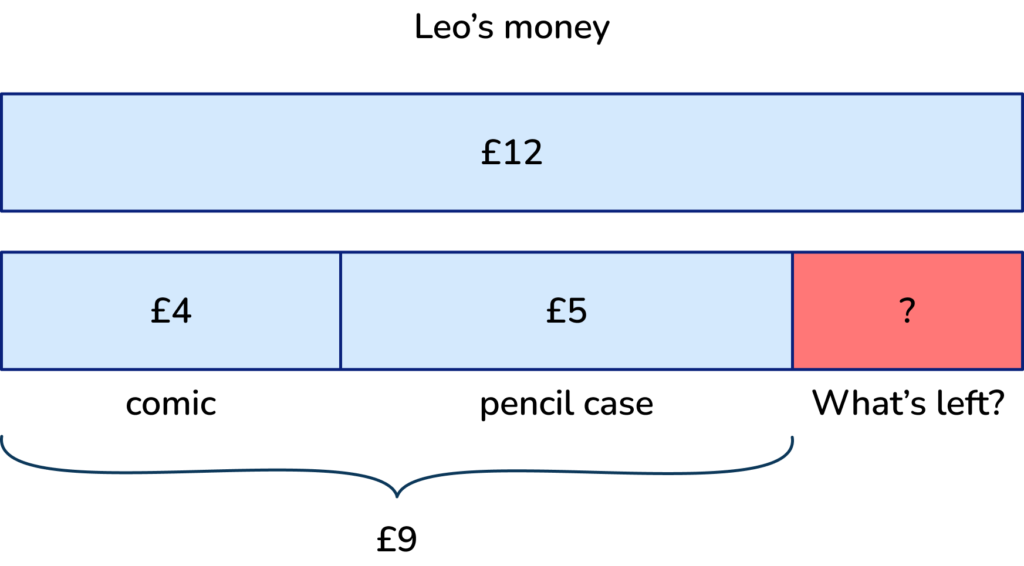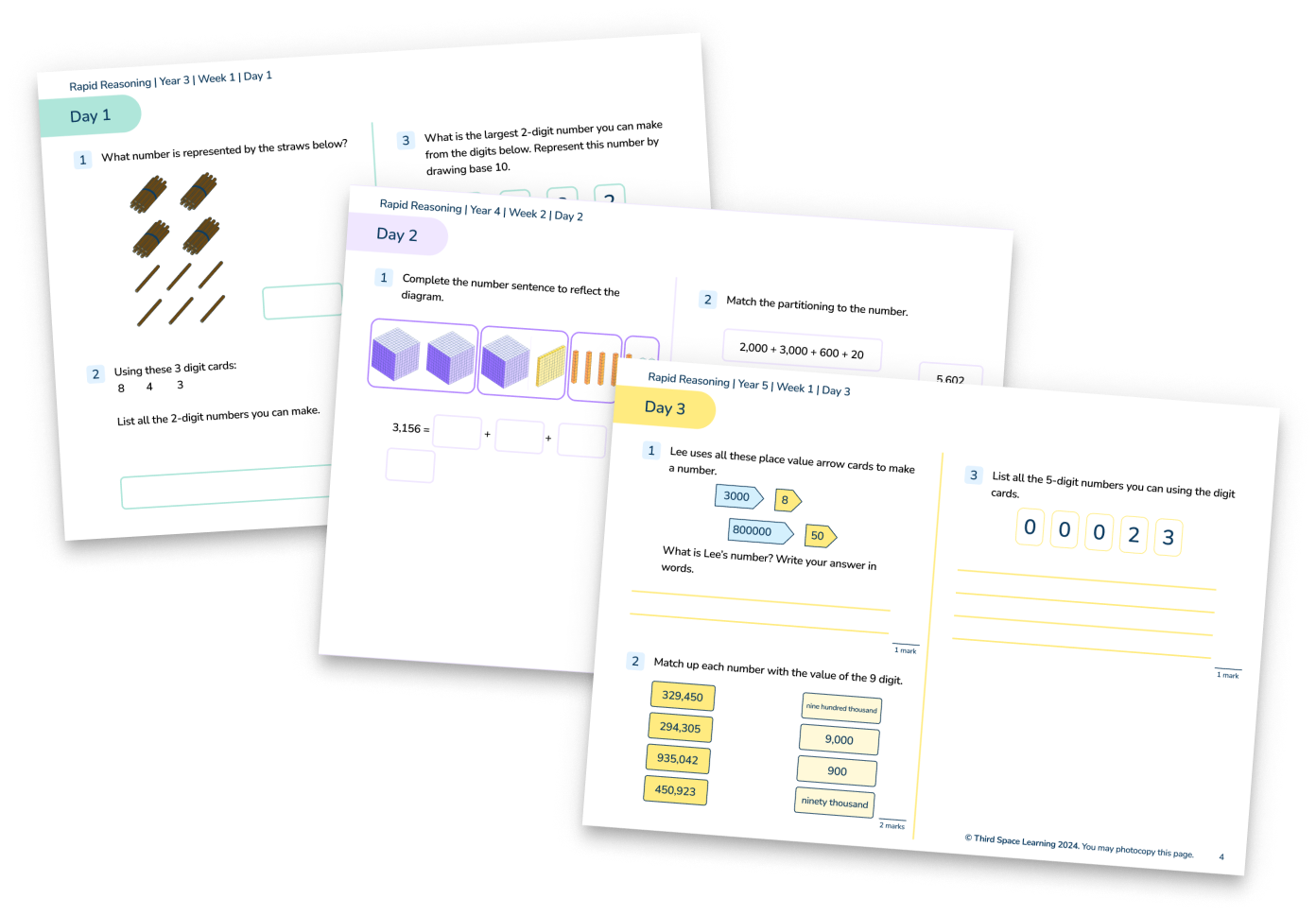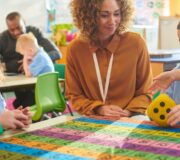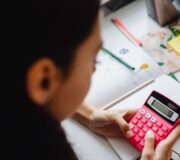20 Word Problems For Year 3: Develop Pupils’ Problem Solving Skills Across Single and Mixed KS2 Topics
Word problems for Year 3 serve as a vital link between pupils’ mathematical skills and real-world application. While most pupils successfully develop and consolidate fluency in number facts and written calculation methods throughout Year 3, they often struggle to apply this knowledge to real life problem solving.
To support your problem solving teaching, our team of expert primary teachers have created this collection of 20 word problems for Year 3 maths.
Every child, regardless of attainment, needs exposure to reasoning questions. This collection aims to provide you with ready to use, engaging and curriculum-aligned opportunities for pupils to practice reasoning and problem-solving alongside fluency work. These problems cover a range of KS2 maths topics, including:
- The four operations (addition and subtraction, multiplication and division word problems)
- Fractions
- Measures
- Statistics
The questions are great to use as lesson starters, extension tasks, or as homework. This article also includes worked examples, teaching ideas, links to Year 3 maths worksheets and further free and premium maths resources.
Years 3 to 6 Rapid Reasoning (Weeks 1-6)
Download this free pack of word problems to improve your class' problem solving skills. Includes questions for Years 3 - 6.
Download Free Now!Year 3 maths word problems in the national curriculum
In Year 3, pupils focus on one-step problems, covering a range of topics across the national curriculum. However, pupils may also start to be introduced to simple two-step word problems. Below is a breakdown of key learning expectations in Year 3 across the main topic areas.
Place value
Solve number problems and practical problems involving:
- identifying, representing and estimating numbers using different representations
- recognising the place value of each digit of a 3-digit number
- comparing and ordering numbers up to 1000
Addition and subtraction
Solve addition and subtraction word problems:
- involving missing numbers
- using number facts and place value
Multiplication and division
Solve multiplication and division problems, including:
- missing number problems
- positive integer scaling problems
- correspondence problems
Fractions and decimals
Solve problems involving:
- adding fractions and subtracting fractions with the same denominator
- counting in tenths
- unit fractions and non-unit fractions
- equivalent fractions
Measurement
Solve problems involving:
- length, volume, perimeter and mass
- money word problems, including working with decimal points and multiplying, dividing, adding and subtracting money
- time word problems
Statistics
Solve one-step and two-step questions using data presented in:
- scaled bar charts
- pictograms
- tables

Meet Skye, the voice-based AI tutor making maths success possible for every student.
Built by teachers and maths experts, Skye uses the same pedagogy, curriculum and lesson structure as our traditional tutoring.
But, with more flexibility and a lower cost, schools can scale online maths tutoring to support every student who needs it.
Watch Skye in actionAddition word problems for Year 3
In Year 3, pupils are exposed to a range of addition word problems, including problems involving mental maths and 3-digits addition using formal written methods.
Addition question 1: addition of three-digit numbers
A family driving on holiday travel 146 miles from home to the first service station.
They then drive a further 175 miles to reach their destination.
How far have they travelled altogether?
Answer (1 mark): 321 miles
146 + 175 = 321
Addition question 2: money
Evie is buying a bottle of drink from a vending machine. She has put in 40p. The vending machine shows she still needs to put in £1.25.
How much is the bottle of drink?
Answer (1 mark): £1.65
125p + 40p = 165p
Addition question 3: addition with regrouping
Jamie scored 643 on his new online game.
Jared scored 468.
How many points did they score between them?
Answer (1 mark): 1111 points
643 + 468 = 1111
Subtraction word problems for Year 3
Subtraction word problems in Year 3 comprise a combination of mental calculation questions and those involving formal written subtraction up to 3-digits. When approaching subtraction problems, children should estimate answers and check their calculations by using the inverse.
Subtraction question 1: subtraction with regrouping
Ahmed collects 374 stickers.
He needs 526 stickers to fill his sticker album.
How many more stickers does he need to collect?
Answer (1 mark): 152 stickers
526 – 374 = 152
Subtraction question 2: three-digit number subtraction with regrouping
A bag of carrots weigh 360g
A bag of tomatoes weighs 235g.
How much heavier is the bag of carrots?
Answer (1 mark): 125g
360 – 235 = 125
Subtraction question 3: money
Ahmed buys a bag of sweets for £1.45.
He has a £2 coin. How much change will he get?
Answer (1 mark): 55p
200 – 145 or count up from £1.45 to £2
Multiplication word problems for Year 3
By the end of Year 3, pupils should be able to recall and use multiplication facts for the 3, 4 and 8 times table. They should also be starting to progress to using the formal written method for solving multiplication word problems involving 2-digits multiplied by a 1-digit number.
Multiplication question 1: using times tables facts
It costs £7 for a cinema ticket
Amber’s mum pays for Amber and her 3 friends.
How much does she pay for all the tickets?
Answer (1 mark): £28
7 x 4 = 28
Multiplication question 2: multiplying a two-digit by one-digit
5 mini buses are used to take Year 3 pupils on a school trip.
Each minibus transports 15 children.
How many children go on the school trip?
Answer (1 mark): 75 children
15 x 5 = 75
Multiplication question 3: multiplying a two-digit by one-digit
There are 24 questions on a word problems worksheet.
A group of 8 children each complete the worksheet.
How many questions will the teacher be marking?
Answer (1 mark): 192 questions
24 x 8 = 192
Division word problems for Year 3
In Year 3, pupils will need to learn the division facts for the 3, 4 and 8 multiplication tables. At this stage, pupils are required to learn the formal method for division but division word problems will involve mainly mental calculations.
Division question 1: using division facts
6 children share 18 cookies between them.
How many cookies does each child get?
Answer (1 mark): 3 cookies
18 ÷ 6 = 3
Division question 2: dividing a two-digit by one-digit number
The school choir needs to travel to the concert hall.
There are 32 children in the choir and parents have been asked to help transport the children.
Each parent is able to take 4 children in their car. How many cars will be needed to get all the children to the concert?
Answer (1 mark): 8 cars
32 ÷ 4 = 8
Division question 3: division fact from the 4 times table
Cakes come in packs of 4.
If Jessica needs 36 cakes for her party, how many packs does she need to buy?
Answer (1 mark): 9 packs
36 ÷ 4 = 9
Fraction word problems in Year 3
In Year 3 pupils are exposed to a wider range of fraction word problems involving equivalence, proportional reasoning, and performing basic arithmetic with fractions.
Fraction question 1: finding a fraction of a total
Jude had 28 sweets.
He gave \frac{1}{4} of his sweets to his little sister.
How many did he have left?
Answer (1 mark): 21 sweets
\frac{1}{4} of 28 = 7
\frac{3}{4} of 28 = 21 or 28 – 7 = 21
Fraction question 2: adding and subtracting fractions with a common denominator
Khalifa ate \frac{2}{8} of the chocolate bar and Abdulrahman ate \frac{3}{8} of it.
How much chocolate did they have left?
Answer (1 mark): \frac{3}{8}
\frac{2}{8} + \frac{3}{8} = \frac{5}{8} eaten
\frac{8}{8} – \frac{5}{8} = \frac{3}{8}
Fraction question 3: comparing fractions
Molly ate half of a pizza and Rosie ate \frac{3}{6} .
Who ate the most?
Answer (1 mark): They both ate the same amount
\frac{3}{6} is equivalent to \frac{1}{2} .
Time word problems in Year 3
In Year 3, time word problems may be incorporated into maths problem solving. Students are expected to:
- understand time vocabulary
- be able to compare time in terms of seconds, minutes and hours
- recall how many seconds are in a minute and minutes are in an hour
Time question 1: calculating time intervals
The Smith family are driving to the beach.
They leave at 9:05am and arrive at 9:50am.
How long does the journey take them?
Answer (1 mark): 45 minutes
50 – 5 = 45 or count up from 9:05 to 9:50 = 45
Time question 2: calculating time intervals
Holly puts her cake in the oven at 4:22pm and takes it out again at 4:47.
How long is the cake baking for?
Answer (1 mark): 25 minutes
47 – 22 = 25 or count up from 4:22 to 4:47
Multi-step maths problems in Year 3
When children first move into lower Key Stage 2, word problems are predominantly one-step. As they become more confident, they can be exposed to a wider range of maths word problems integrating real life problems requiring a second step or multi-step word problems.
Multi-step question 1: multiplication and division
Oliver had 3 bags of sweets.
Each bag contained 15 sweets.
If he shared the sweets between him and 4 friends, how many sweets would they all 5 of them get?
Answer (2 marks): 9 sweets
3 x 15 = 45
45 ÷ 5 = 9
Multi-step question 2: sum and remainder
A teacher photocopies 95 maths worksheets and 80 English worksheets in one week.
Teachers can print a maximum of 300 worksheets per week.
How many can the teacher print for other subjects?
Answer (2 marks): 125 worksheets
95 + 80 = 175
300 – 175 = 125
Multi-step question 3: sum and share
Three friends go trick or treating. They add all their sweets together and share them out, so they all have an equal number of sweets.
If Ben gets 34 sweets, Sophie gets 28 and Maisie gets 22 sweets. How many will they each get, once they have put them together and shared them out?
Answer (2 marks): 28 sweets each
34 + 28 + 22 = 84 sweets
84 ÷ 3 = 28
How to teach problem solving in Year 3
Make problem solving relevant to everyday life
When teaching maths problems to Year 3, it’s important to include real life problems linked to the students’ everyday lives and make word problems fun and engaging. This might include:
- acting out the problem
- providing visual images
READ MORE: KS2 maths investigations
Use manipulatives to bring word problems to life
As with KS1, pupils should use concrete maths resources and manipulatives. Provide children with a range of maths resources to support their problem solving, from counters and base 10 blocks to multiplication squares and number lines.
Benefits of pairs, groups and class discussion
Children should have plenty of opportunity to talk in pairs, groups and as a whole class, to share their understanding of what is being asked and their strategies for solving the problem.
Provide pupils with a structured approach to problem solving
Teachers need to explicitly teach pupils how to make sense of word problems to tackle them successfully. Some teachers encourage students to use acronyms, such as RUCSAC (Read, Underline, Calculate, Solve, Answer, Check) to provide a structured approach. While these do simplify the process, it can encourage a formulaic approach, rather than deep mathematical thinking. It is beneficial however to provide pupils with some structure, such as:
1. Read the question carefully and identify the key information needed to solve it
2. Use manipulatives or draw a picture or visual representation to understand the question
3. Identify which calculations are required for solving it
Once pupils reach an answer, they should use strategies to check it, for example:
- Using mental maths skills to round and estimate to check whether the final answer is realistic.
- Calculating the inverse
In the sections below, see how to use this structured approach step by step with worked examples.
Division word problem for Year 3: worked example
Mason needs 4 apples to make an apple pie.
If he has 28 apples. How many apple pies can he make?
1. Read the question carefully and identify the key information needed to solve it
- We know 4 apples are needed to make an apple pie.
- We know there are a total of 28 apples.
2. Use manipulatives or draw a picture or visual representation to understand the question
- Children could use counters to represent the apples, or draw a bar model to help solve it.

3. Identify which calculations are required for solving it
- To calculate how pies the 28 apples will make, we can either use or draw 28 counters and put them into groups of 4. We can see that 28 counters will make 7 groups of 4.
- Using the bar model, we can keep adding 4 to the bar until we reach 28. From the bar, we can see that 7 x 4 = 28.
Answer: He can make 7 apple pies.
Addition word problem for Year 3: worked example
Amira is collecting shiny trading cards. She has 14 cards in her album, and her friend Liam gives her 9 new cards to add to her collection. How many trading cards does Amira have in total?
1. Read the question carefully and identify the key information needed to solve it
- We know Amira starts with 14 cards.
- We know she gets 9 new cards.
- The question is asking for the total number of cards.
2. Use manipulatives or draw a picture or visual representation to understand the question
- Children could use counters to represent the cards, or draw a number line to help solve it.
- Using a number line, start at 14 and count on 9 more.

3. Identify which calculations are required for solving it
- To find the total, we need to add the number of cards Amira started with to the number of cards she was given.
- The calculation is: 14 + 9 = 23
Answer: Amira has 23 cards.
Money word problem for Year 3: worked example
Leo saves £12 to buy a new book. He decides to buy a comic for £4 and a pencil case for £5. How much money does Leo have left?
1. Read the question carefully and identify the key information needed to solve it
- We know Leo starts with £12
- We know the comic costs £4
- We know the pencil case costs £5
- The question asks us how much he has left
2. Use manipulatives or draw a picture or visual representation to understand the question
Children can use a bar model to break the problem into two parts: finding the total spent, and then finding the change.
- Step A: Find the total spent (addition)
- Step B: Find the money left (subtraction)

3. Identify which calculations are required for solving it
To calculate the money Leo has left, we need two calculations:
- Addition: Find the total cost of the items.
£4 + £5 = £9
(Leo spent £9) - Subtraction: Subtract the total cost from the money Leo started with.
£12 – £9 = £3
Answer: Leo has £3 left.
We hope that this collection of word problems for Year 3 becomes a useful resource in your Year 3 maths classroom. For more Year 3 maths resources (including answer sheets), activities, games and puzzles, you can browse our Year 3 maths worksheets or search on the Third Space Learning Maths Hub.
More word problem resources
Third Space Learning offers a wide array of free maths and word problems resources for other year groups:
Support your pupils’ learning and provide them with even more problem-solving practice with these KS2 topical maths packs and answer sheets. The following worksheets focus on real life problems, themes and dates across the academic year:
DO YOU HAVE STUDENTS WHO NEED MORE SUPPORT IN MATHS?
Skye – our AI maths tutor built by teachers – gives students personalised one-to-one lessons that address learning gaps and build confidence.
Since 2013 we’ve taught over 2 million hours of maths lessons to more than 170,000 students to help them become fluent, able mathematicians.
Explore our AI maths tutoring or find out about a primary school maths tutor for your school.






